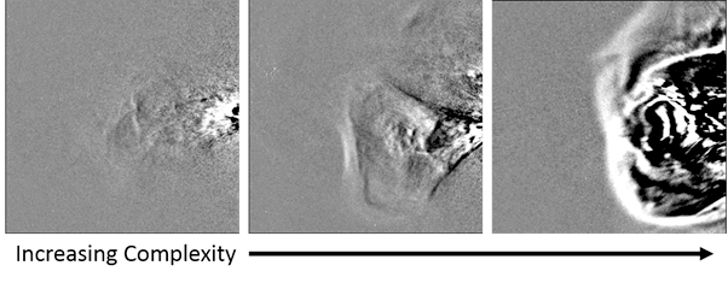Please note: The Sun exhibition ended on 4 November 2020. To find out what exhibitions and activities are open today, visit our What’s On section.
This year marks the 160th anniversary of the most violent solar storm ever recorded, the so-called Carrington Event of 1859, when auroras were seen around the world and Telegraph systems failed. In today’s connected, technological era, a storm of this magnitude would cause damage and blackouts to power grids, satnav and communications.
So it is timely that the results of the new study of super-heated, electrically-charged outbursts from the Sun, conducted by thousands of volunteers, are announced today at the Royal Astronomical Society National Astronomy Meeting 2019, will be published in the journal Space Weather and also feature in the forthcoming major new exhibition, The Sun, which opens on 20 July here at the Science and Industry Museum.
An overlooked threat

Science Museum Group © The Board of Trustees of the Science Museum
A recent survey, commissioned from YouGov by the museum shows that attitudes have changed little – and for the worse – since a set of workshops in 2014/15 along with an online survey revealed three quarters of people know very little or almost nothing about the threat.
The UK-wide survey reveals that over 97% of the population know little or nothing about space weather and over 80% are unconcerned about the impact of a potentially severe space storm.
Even though there have been warnings that the UK should plan now to mitigate the effects of a rare but potentially serious solar superstorm, the survey reveals that more could be done by the public to prepare for severe space weather.
According to a report published in 2013 by the Royal Academy of Engineering, the first in depth assessment done in the UK, a solar superstorm is inevitable at some point and will degrade the performance of the electricity grid, satellites, GPS systems, aviation and possibly mobile communications.
‘potential to improve forecasts’
The experiment was devised by Chris Scott, Professor of Space and Atmospheric Physics, who is running the experiment with Shannon Jones from the University of Reading, the citizen science platform Zooniverse and the Science Museum Group.
The exhibition features the preliminary results of the citizen science experiment on Zooniverse, in which 2600 people did more than 60,000 classifications of solar storm images from NASA’s STEREO space probes.
The results of the experiment suggest a link between complexity of solar storms and the solar cycle – a predictable 11-year change in the Sun’s activity – changes in the number and size of sunspots, flares, and other manifestations.
The results ‘offer the potential to improve forecasts of the impact of these storms on Earth,’ said Ms Jones.
why are solar storms so dangerous?

The team is interested in how the magnetic fields of a wave of charged particles from the Sun, known as a coronal mass ejection, or CME, can be aligned in such a way that its energy can be efficiently transmitted to Earth.
When solar storms arrive, they wreak the most havoc if their magnetic field is oppositely aligned to that on Earth and there is a possibility that complexity of the solar storm might influence how they couple.
‘It might be a limiting factor, so that if you have a storm with a uniform magnetic field as it goes past Earth, it could have a large and extended impact on the Earth if it were aligned correctly. But if the storm appears more complex, with inner loops and structures, it is more likely that it will create activity but probably not major activity,’ said Ms Jones. ‘The next step is for us to understand this in more detail.’
Another issue is to establish what participants considered as a complex or complicated coronal mass ejection, with participants often listing the following qualities; “bigger”; “brighter”; “complicated patterns”; “messiest”; “least lightbulb-like shape”; “without a clear front”; “multiple fronts”; “more white regions”.
The team has investigated confounding factors and the trend in complexity, which corresponded to the trend in sunspot number, persists.
further investigation needed
Further investigation is needed to establish exactly what makes a CME ‘complex’, and whether this is an independent quality, which cannot be described by brightness or angular width alone, they say.
The Reading team now wants volunteers for a new set of experiments on the same site which will assess impact of brightness on complexity, weigh up how to quantify complexity, and study differences in the STEREO A and B cameras. ‘Shannon’s results show that storms in the Stereo B camera were consistently ranked as less complex than in STEREO A, and that might be because the two cameras are not identical,’ said Prof Scott. ‘As we know the size of an object each camera can resolve, this might give a clue to the size of structures that people interpret as complex.’
Through this citizen science project, everyone has the chance to participate – just visit our Zooniverse project page and click on the ‘classify’ tab to help compare as many of the thousands of images of solar storms as you can.
The Science Museum Group has engaged visitors in research for many years, through our Live Science programme and in citizen science too, notably Hooked On Music and our Turing Sunflower experiments at the Science and Industry Museum.
One comment on “Citizen scientists find clue to help predict devastating solar storms”
Comments are closed.
One more step to better understand The Sun. Method which was used to the research looks like fuzzy system. It is surprising and smart method to extract more information from already collected data.